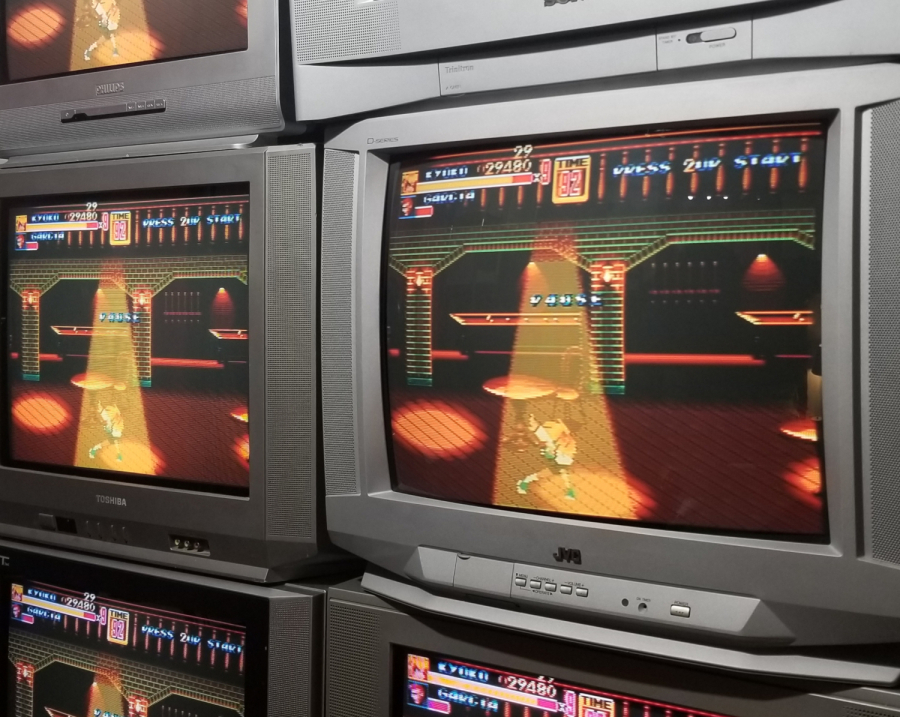
Table of Contents
- In General
- NES / Famicom
- PC Engine / TurboGrafx-16 (*and Mega Drive)
-
Sega Genesis / Mega Drive
- Louis Castle | The Lion King, Dungeons & Dragons: Warriors of the Eternal Sun, etc.
- Eric Iwasaki | X-Men, Spider-Man, Menacer 6-Game Cartridge, etc.
- Steve Ross | Chakan, X-Men, X-Men 2: Clone Wars, Pink Goes to Hollywood, Taz in Escape from Mars, etc.
- Ellis Goodson | Jurassic Park, Technoclash, Shadowrun, Jurassic Park: Rampage Edition, Vectorman, Vectorman 2, etc.
- Robert Hunter | Adventures of Batman & Robin, Batman Returns, etc.
- Jeff Jonas | Vectorman, Jurassic Park, Shadowrun, etc.
- William Kier | Eternal Champions, Eternal Champions 2
- Ayano Koshiro | Streets of Rage 2, Beyond Oasis, etc.
- William Anderson | Aladdin, Jungle Book, Cool Spot, etc.
- Japanese Developer Ancient | Blog Post on Bare Knuckle II Development
- Yasushi Yamaguchi | Super Thunderblade, Sorcerian, Kid Chameleon, Sonic CD, Sonic 2
- & Naoto Ohshima | Phantasy Star II, Sonic the Hedgehog, Last Battle, etc.
- Ryoichi Hasegawa | Ecco the Dolphin
- Yuzo Koshiro | Streets of Rage, Streets of Rage 2, Revenge of Shinobi, Earthion, et al.
- Sega Saturn
- Sony PlayStation
- Appendix I: Notes on Hardware Color Blending
- Appendix II: RF/Composite Artifacts, and How to Minimize Them
- Appendix III: Video Games as Art
In General
Masahiro Sakurai: "Games of the past were made solely with these CRTs in mind—A checkered pattern of pixels, for example, can take on a completely different texture when viewed on a CRT"[1] (using composite)


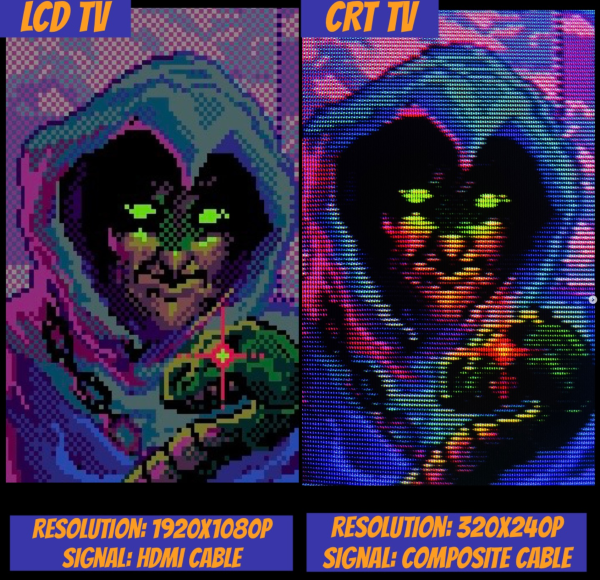
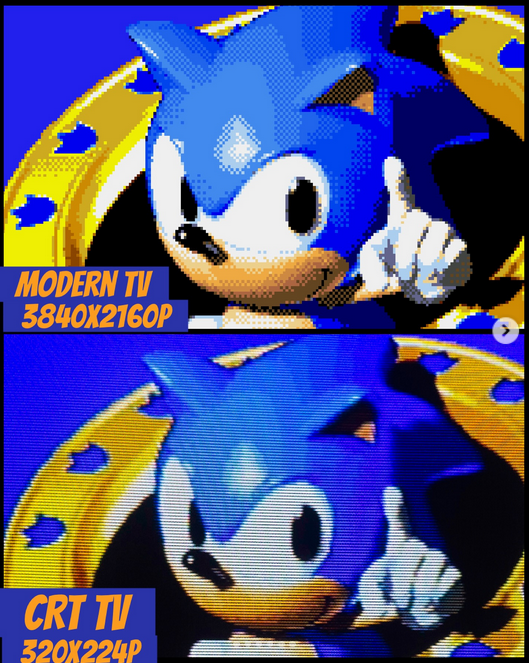
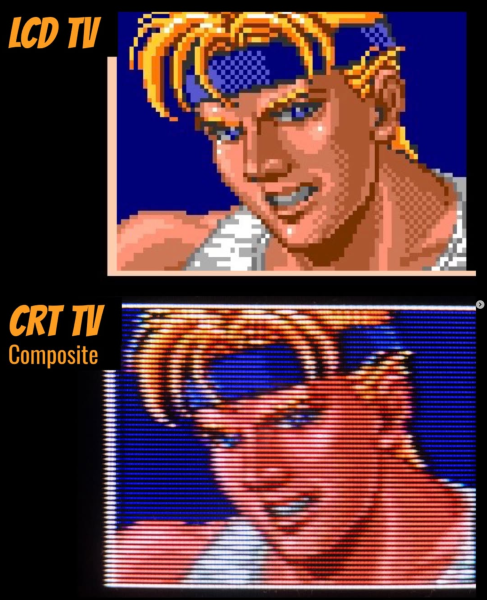

NES / Famicom
-
Yoshimiru Hoshi | Metal Slader Glory (NES/SNES), Gall Force (MSX), Fire Bam (NES), etc.
There was nothing we could do about the colors changing between the development monitors and a normal TV, but pixel art made for a clear RGB monitor and art made to look good on a TV set is completely different. So before development when we were deciding which look to go for I chose to prioritize home TV sets without hesitation and started drawing with that in mind.
-Translated by Peter Bernard
PC Engine / TurboGrafx-16 (*and Mega Drive)
John Szczepaniak: Did you have to consider TV refresh rates?
Masayuki Suzuki: We did not have to take that into consideration. We were more concerned with the color blending and bleed on the PC Engine and the Mega Drive. There was a difference in how colors blended on these systems, so we took that into account.
The Untold History of Japanese Game Developers Volume 2
Sega Genesis / Mega Drive
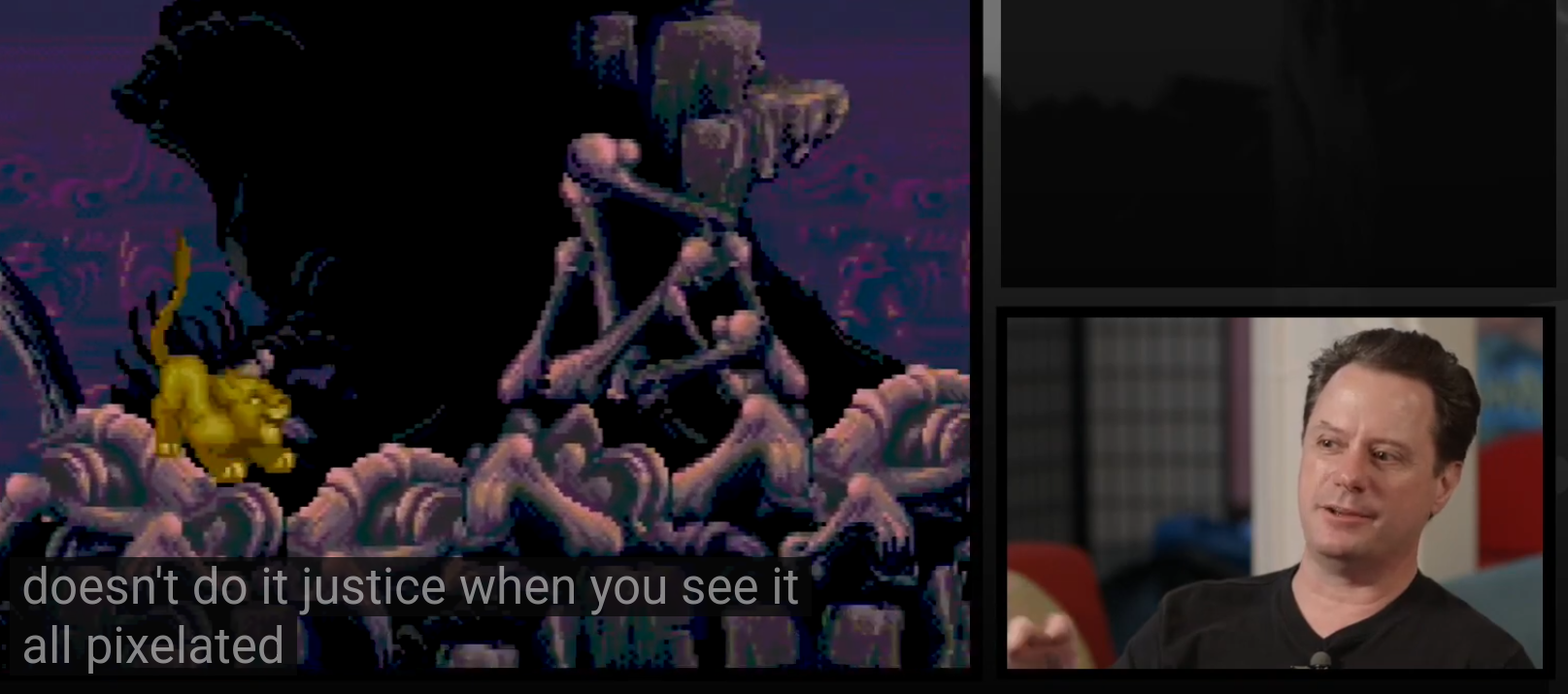
You can actually see every single pixel which means it looks nothing like it did back in the 90s. Those hash patterns actually on the televisions of the day would've blurred together into very nice gradients. I think that's why people have a misimpression of how this stuff looked.
Again, it doesn't do it justice when you see it all pixelated, because on a television of the day this was all very smooth and the palettes really matched the beautiful work.
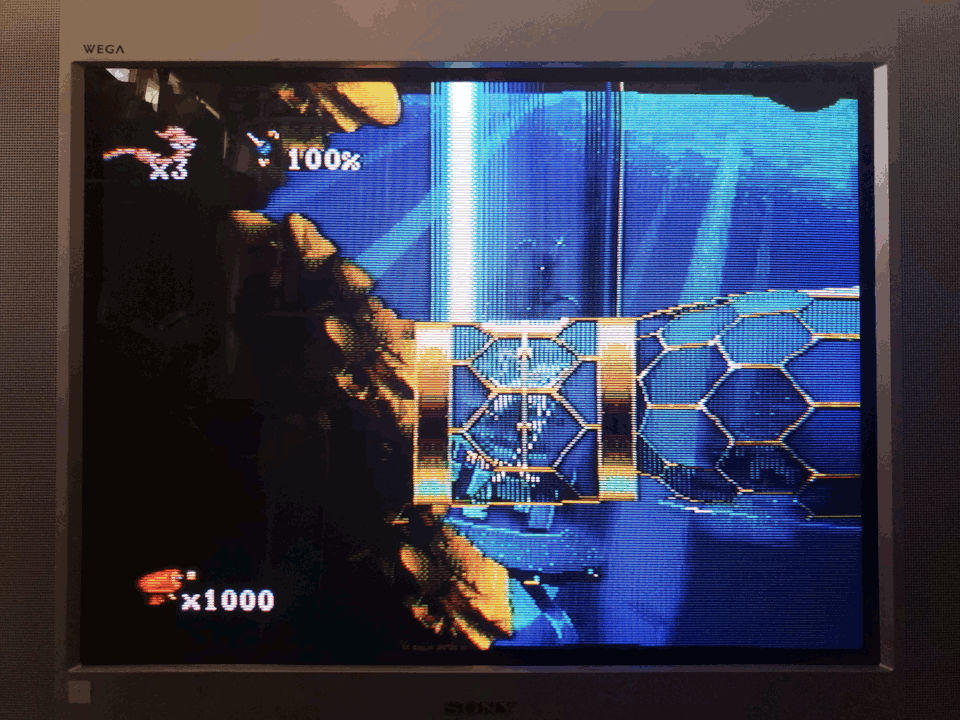
[Eric] Iwasaki and the other artists used a Sega-developed program called Megawice for laying out art within 8x8 character tile maps. This was a common method on hardware of the period, as it efficiently rendered sprites and scrolling backgrounds. The artists would create their sprites in Deluxe Paint: Animation and then import them into Megawice. Then, they previewed the graphics on an actual television connected to Genesis hardware.
Playing at the Next Level: A History of American Sega Games, p.183
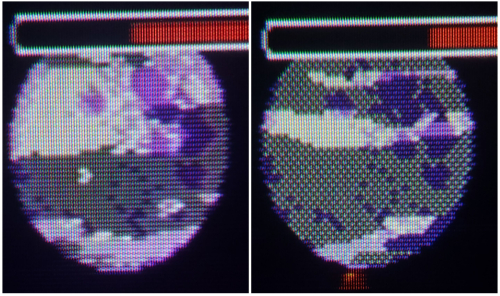
-
Steve Ross | Chakan, X-Men, X-Men 2: Clone Wars, Pink Goes to Hollywood, Taz in Escape from Mars, etc.
Steve Ross, the guy who was the lead on Chakan, was also the lead artist on X-Men. When I first met him, his ability to play with those limited pixels and palettes was really great. He had this amazing sense of 3D and shading and things. I'd never met someone who had that kind of skill with pixels. That was his thing. He did a lot of blending of different colors. You know, you were drawing things on a CRT, and you could be defeated by all the smearing of pixels...color changes ended up smearing across multiple pixels. You could find yourself defeated by that. It wasn't like drawing like an LCD display today. He took advantage of it though, and used all that blending to come up with in-between colors that weren't directly available on the palettes. A lot of the way to get any extra depth in the colors was doing these alternations from one pixel to the next between adjacent colors. When we looked at it on the Mac display, we'd look at the artwork coming in from the paint program, and it looked chunky. But then when you drew on the TV, it's like, 'Wow.' You'd see the end result. He was just a master at tuning that.
The Minds Behind Sega Genesis Games: Interviews with Creators and Developers, p.108-109
-
Ellis Goodson | Jurassic Park, Technoclash, Shadowrun, Jurassic Park: Rampage Edition, Vectorman, Vectorman 2, etc.
You would go to Ellis and you'd say, 'This background looks kind of plain. Let's put a section where there's a wooden fence.' Thinking he'd get back to you pretty quick. After a while you'd start thinking, 'Hey, where's Ellis?' You'd go over there and see an incredible fence on his monitor, but he would be really focused on one of the planks in the fence and how to render it properly, so that it looked really good on a television screen.
The Minds Behind Sega Genesis Games: Interviews with Creators and Developers, p.21
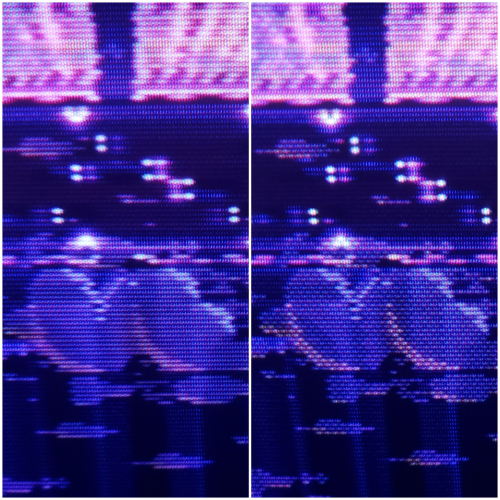
Sega-16: Many artists had to find ways to work around the limited color palette of the Genesis. Was this ever a problem for you?
Robert Hunter: It was tough, but thanks to how fuzzy NTSC displays were, you could create very cool dithering patterns that looked seamless to give you more colors than really existed.
Sega-16 Interview[5]
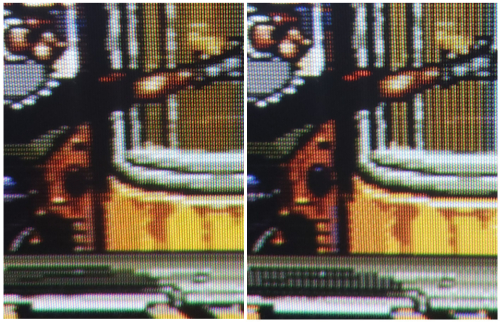
We had learned from Shiny Entertainment and other competitors how vertical line blending was more preferable on the TV than straight dithering. That is why everything looked weird on the PC. Those vertical lines blend automatically on the TV.
The Game of Nerds - Vectorman 25th Anniversary[6]

Heather Anne Campbell: Do you have to do each dot in dithering?
William Kier: Yes
Heather Anne Campbell: You do?
William Kier: Yeah, you're just painting a checkerboard essentially.
Heather Anne Campbell: Oh my god.
William Kier: And it was - so on the computer it's very dithered but on the TVs we did it so that the colors would blend together better. But now when you look at it on the monitors, it's, you can see just all the-
Heather Anne Campbell: I thought that would be like a brush, where it would be like 'oh this section is dithered', but you did it manually.
William Kier: Oh man it was all mouse artwork, it took a long time.
How Did This Get Played? Ep. 19[7]
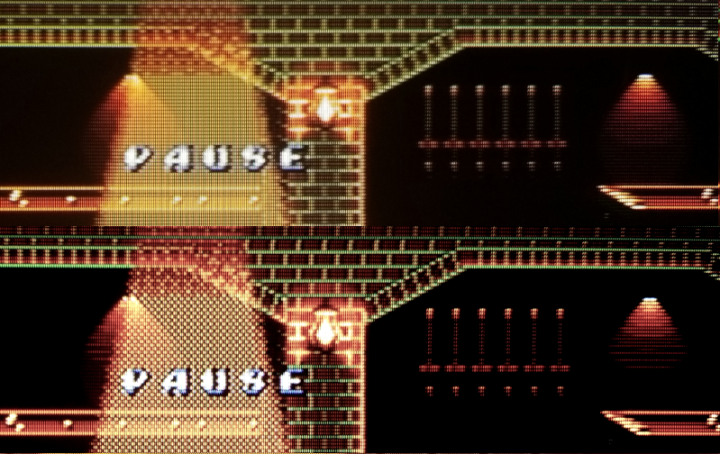
Wada Makoto Mamoru: When you were developing for the Megadrive, what was the one hardware feature you wished for most?
Ayano Koshiro: Transparencies!
Wada Makoto Mamoru: Hah, I knew it.
Ayano Koshiro: Transparencies. The Super Famicom had those. Luckily the Megadrive could achieve a dithering effect by having the colors of long, thin pixel lines blend into each other. That’s why when we first saw that transparent waterfall in Sonic we were all really impressed. How did he do it? Then when I looked closely it was like, “oh, I see.” (laughs) That waterfall effect in Sonic was so pretty.
Shmuplations Translation[8]
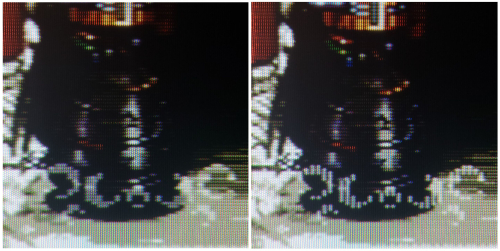
The way the Genesis works is if you space white lines one pixel apart form each other you can get a glass effect. But what we discovered at Virgin is if you put two different colors together, with that same effect you could get color bleed which would give you more colors on the Sega Genesis than technically you were supposed to have. If you actually look at the sprite sheets for Jungle Book, Cool Spot, Aladdin, you'll see there's actually these bands of lines in the artwork that look kind of weird. But if you take into consideration the bleeding effect, it explains why we're getting more colors than we should be getting, and it really did help with that authentic animation look. It made them look like they could be cartoons on TV.
The Retrohour Podcast[7]
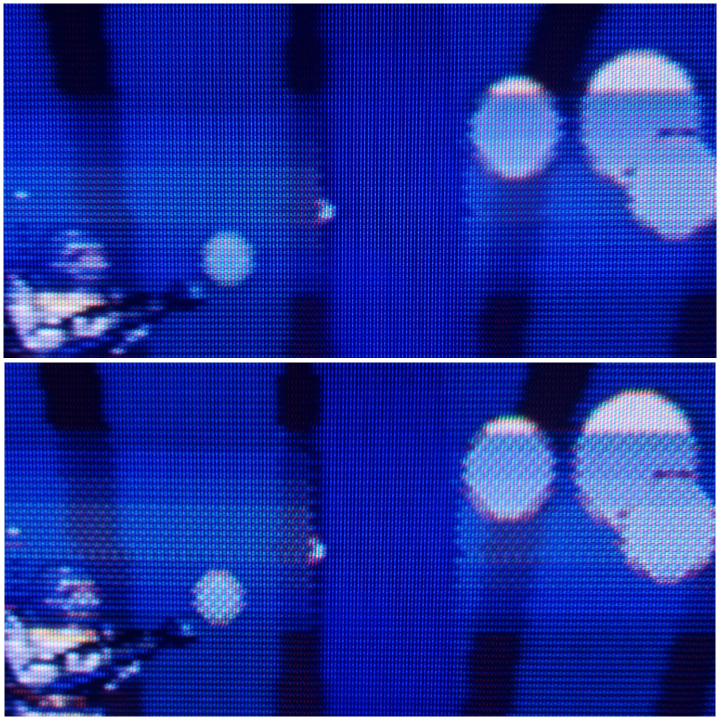
-
Japanese Developer Ancient | Blog Post on Bare Knuckle II Development
Today, we would use semi-transparency to represent spotlights, but the Mega Drive didn't have that function. So we created a pseudo-transparency by placing transparent and opaque pixels in a checkerboard pattern. This expression looked beautiful because of the TVs of the time, which were prone to bleeding, but on today's monitors, where the pixels are clearly visible, it looks dirty...on an actual TV it looks even more clear and beautiful.
Bare Knuckle II Development Blog[8]
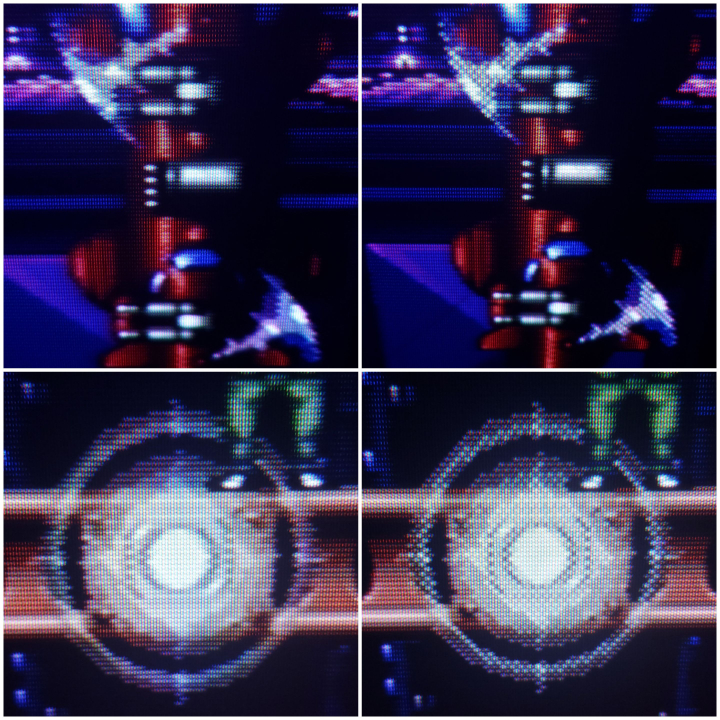
-
Yasushi Yamaguchi | Super Thunderblade, Sorcerian, Kid Chameleon, Sonic CD, Sonic 2
-
& Naoto Ohshima | Phantasy Star II, Sonic the Hedgehog, Last Battle, etc.
Naoto Ohshima: Back then, the TVs were CRTs. With the Mega Drive's limited number of colors, we made use of the CRT's blurriness.
Yasushi Yamaguchi: At the beginning we were making everything on RGB monitors, and we expected it to appear on the TV like that. But when we actually saw the output from a Mega Drive on a TV it was totally blurry.
Naoto Ohshima: We'd use that blurriness to create intermediate colors.
Yasushi Yamaguchi: Yeah. We started designing everything to make use of the blurriness, but the surprising problem now is that recent re-releases on the PS3 or PS4 display the pixels as-is. I want to say, "Stop that!"
-Phantasy Star: 31 Nenme no Genten[9]
Q: What do you think is appealing about "Ecco"?
A: First of all, the quality of the graphics was outstanding for that time. It was amazing in RGB, but even with normal composite, the way it blended was stunning! Graphic designers at the time were creating beautiful graphics by using techniques such as putting dots in a checkerboard pattern, and they blended on a TV.[10]
Using composite video really adds to the authenticity of playing retro consoles.[11]
Q: Which video output will you play it with to best enjoy the visual effects on CRT?
A: To enjoy it on CRT, a simple video output is all it takes—the image is already magnificent as it is. And what's more, it reinforces the nostalgic feeling![12]
Q: Is there going to be crt filter for the game? Seeing the footage from tgs it looks better instead of HD. So if people don't have a crt TV a filter would be nice to pick in the settings.
A: Likely we'll add it, but a CRT definitely gives the best experience.[13]
Q: Would you accept this for a megadrive game in 1993?
A: First of all I want to see it in the CRT.[14]
Sega Saturn
The Saturn came with a composite cable in most territories. At the Sega Developer's Conference 1996, Sega advised using meshes/dithering for transparency effects for better performance.
-
Sega Developers Conference, March 1996
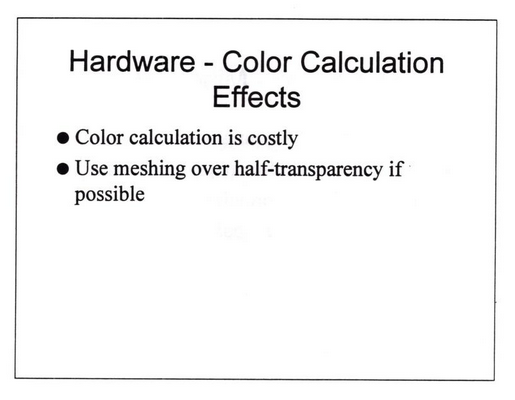
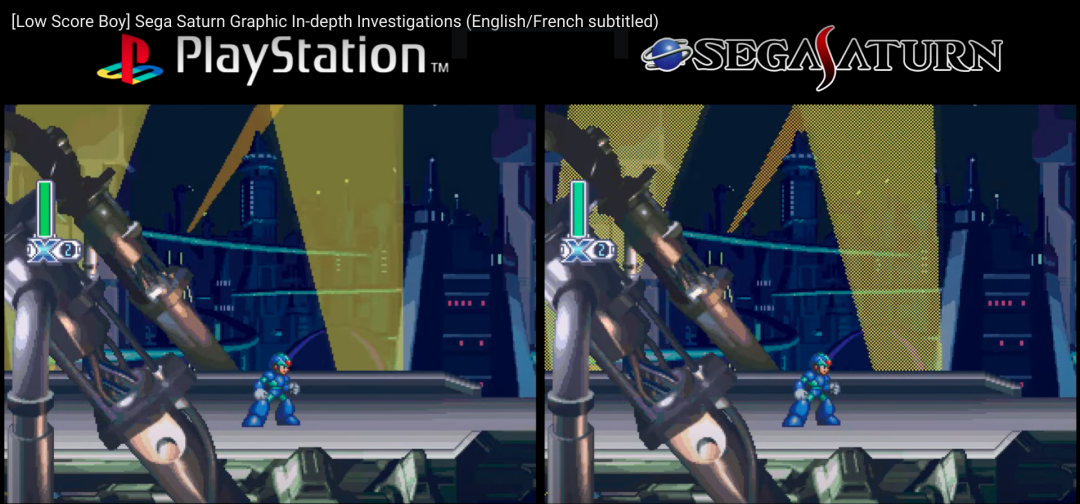
Sony PlayStation
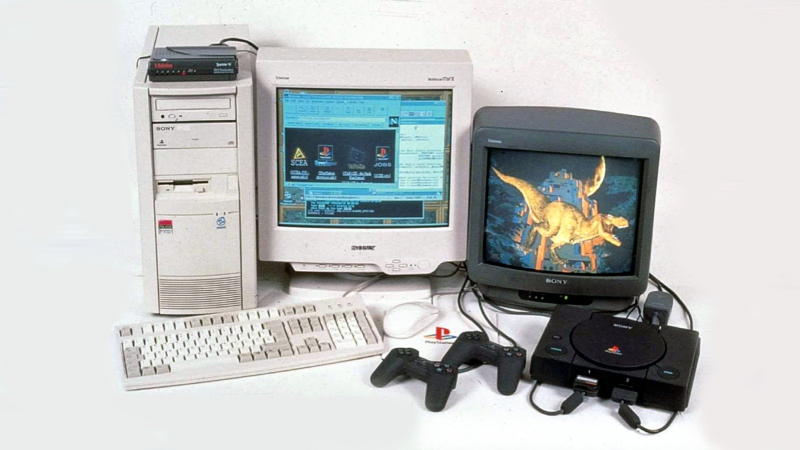
Not only did the PlayStation come with a composite cable worldwide, the black Net Yaroze version for development which cost $700-$1000 also came with a composite cable, including in Europe. For its EU release, the Net Yaroze PS1 came with a composite to scart adapter (no RGB cable).
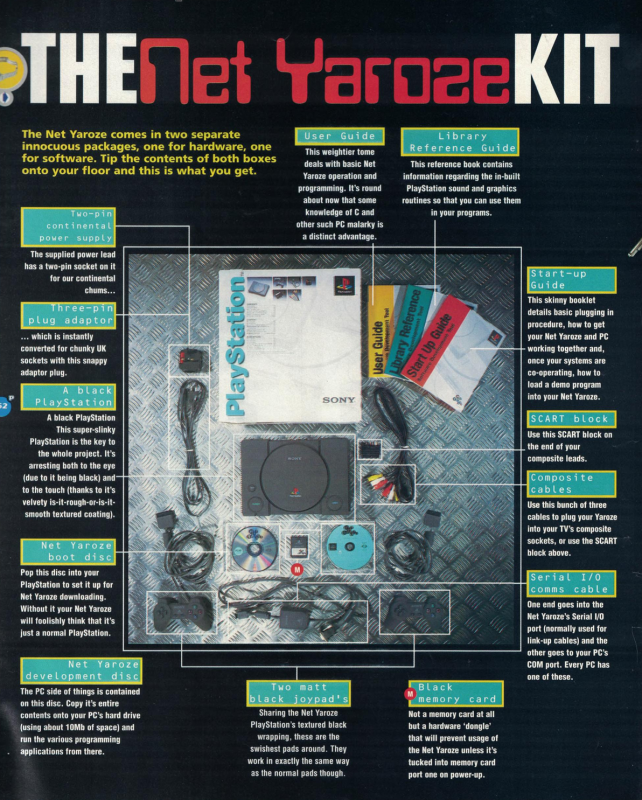
The PlayStation's 24-bit true color mode cannot use the drawing functions of the GPU, hence games most often used 15-bit color mode. Sony's development documents advised that dithering provides pseudo-full color in 15-bit mode.
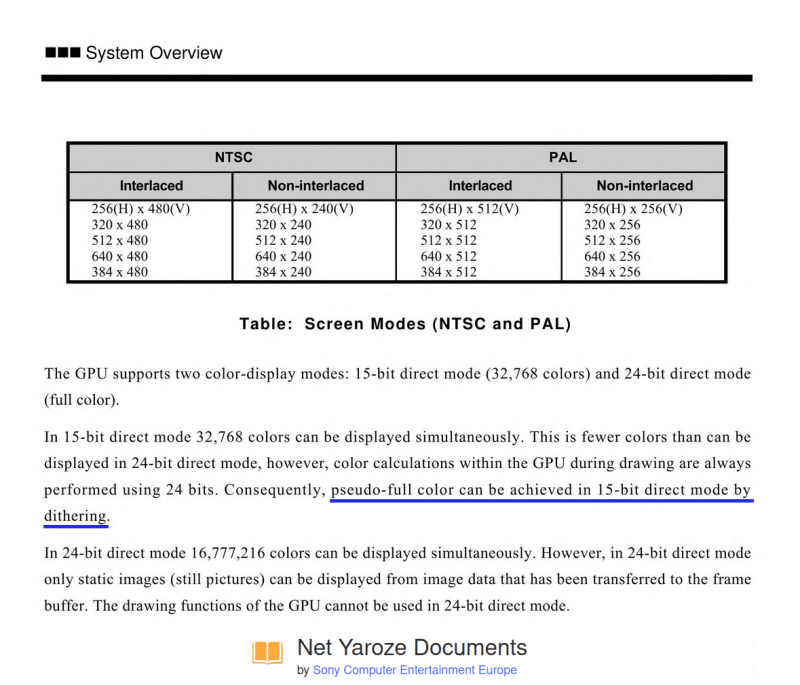
PS1 images below captured by Chris Covell.
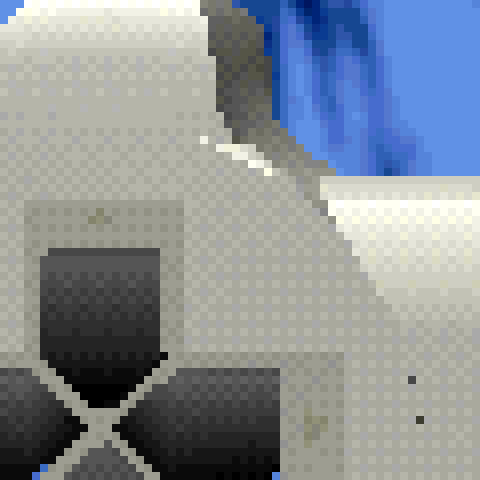
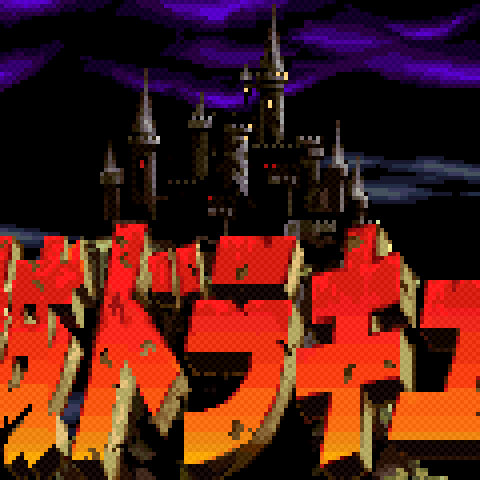
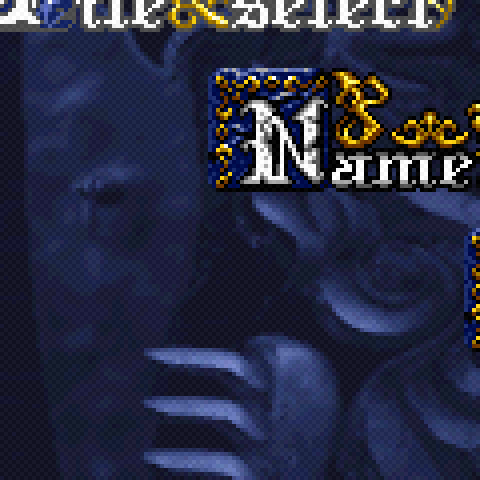
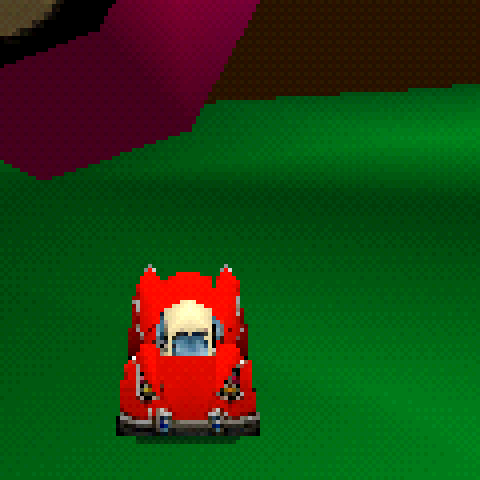
Appendix I: Notes on Hardware Color Blending
Note that RF and composite have the ability to blend dithering patterns, unlike RGB, component, and S-Video (an exception being for very small, low line count sets). For some context, the Genesis/Mega Drive came with a composite cable in Japan, and an RF adapter in most other countries including in Europe[15]. Sega never released an RGB cable for the Mega Drive in Japan, its home territory (let alone most other countries including major markets such as Brazil, USA, etc.).
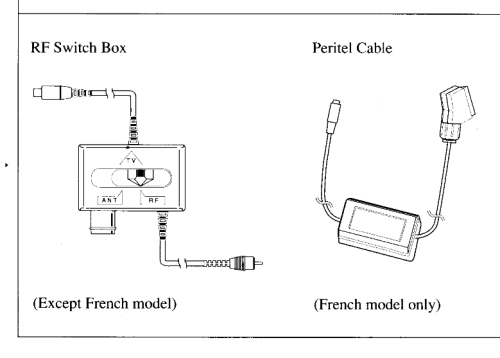
On the Sega Genesis and Saturn, dithering patterns were most commonly used to create transparency effects for shadows, clouds, water, and spotlights. Beyond that, they were also used for sky and floor gradients, as well as to generate additional colors wherever else desired. Dithering patterns can either be displayed as a blend of neighboring pixels (just as a painter mixes base colors to access more colors), or instead, as an unblended, lower color depth checkered or alternating stripe pattern. Some common comb filters used in TVs also prevent blending in RF/Composite, so be sure to check that it's working in your setup.
Appendix II: RF/Composite Artifacts, and How to Minimize Them
When using RF/Composite, certain artifacts can appear to varying degrees, such as dot crawl (cross luminance), hanging dots (chroma mesh failure), and rainbowing (cross color). One of the most common artifacts is hanging dots, which are caused by comb filters, but can be bypassed by using a notch filter instead. A guide to using a notch for composite decoding is here.
Some consoles like the Genesis/Mega Drive generally don't provide a clean/in-spec composite signal. To get a clean signal from the Genesis/Mega Drive, you can attach a 32X which will do the composite encoding for the Genesis, or have the system modded with a Mega AV.
Appendix III: Video Games as Art
The Bitmap Brothers, the creators of Speedball and many other titles, stated, "You want the industry to be taken seriously, you want the artform to be taken seriously."[16]
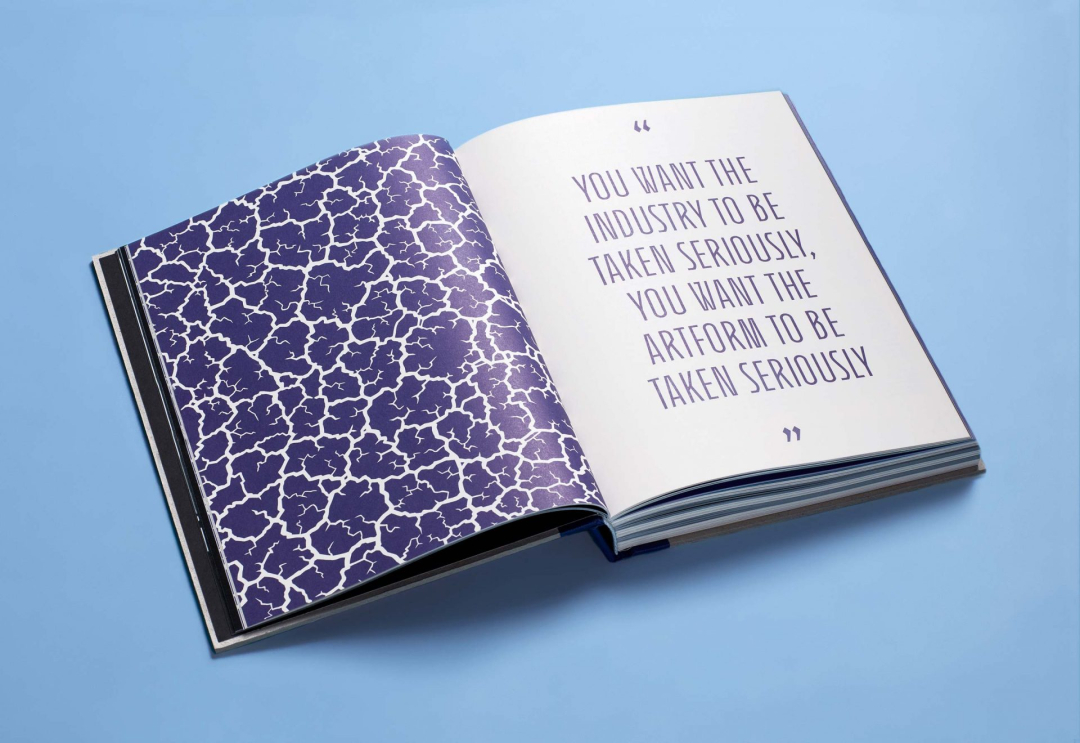
For the artists and consumers who share this sentiment of wanting to treat video games as a serious art form, what are the standards for serious treatment and presentation?
There are many questions to be considered in the conservation and reinstallation of the work. What did the artist originally intend and how has that concept been realized in the past? How can one preserve and document the installation? -Inside Installations: Theory and Practice in the care of Complex Artworks, p.11[17]
It is well established that the artist is closely consulted on the presentation of the piece.
When matters of reinstallation or conservation are at stake, answers are searched for in artist’s statements and interviews...the artist, although not being the actual owner of the work, is generally considered to be a — if not the — crucial stakeholder in the perpetuation of the work -Saaze, Installation Art and the Museum, p.117[18]
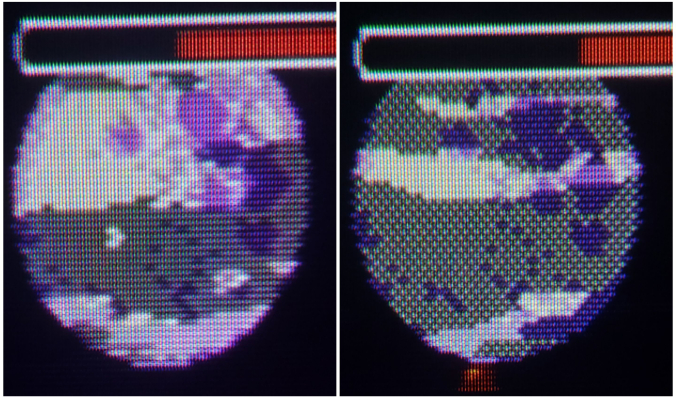
 This work is licensed under a
This work is licensed under a